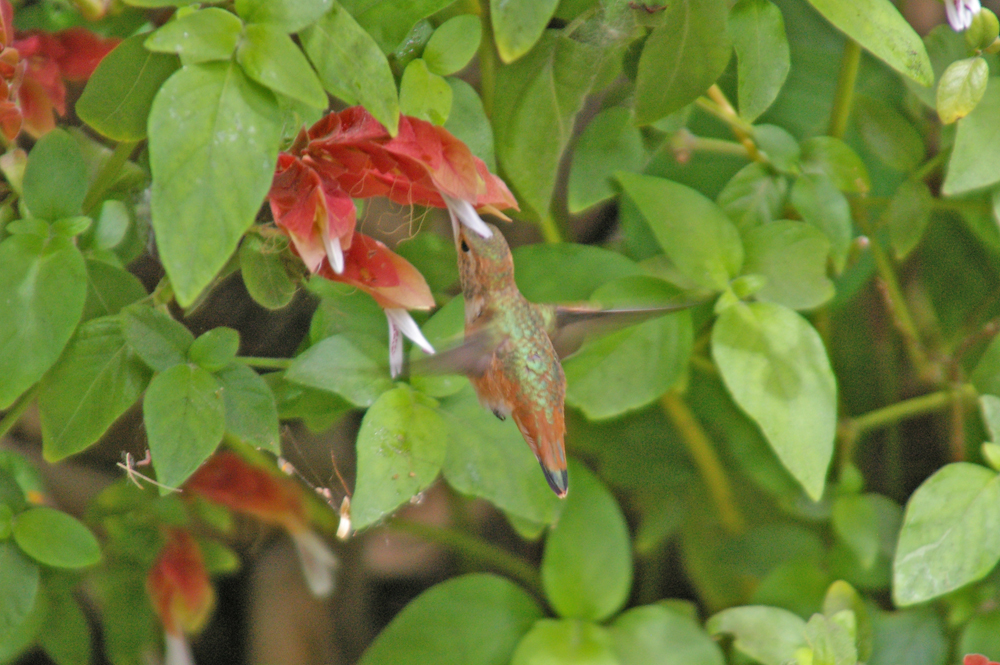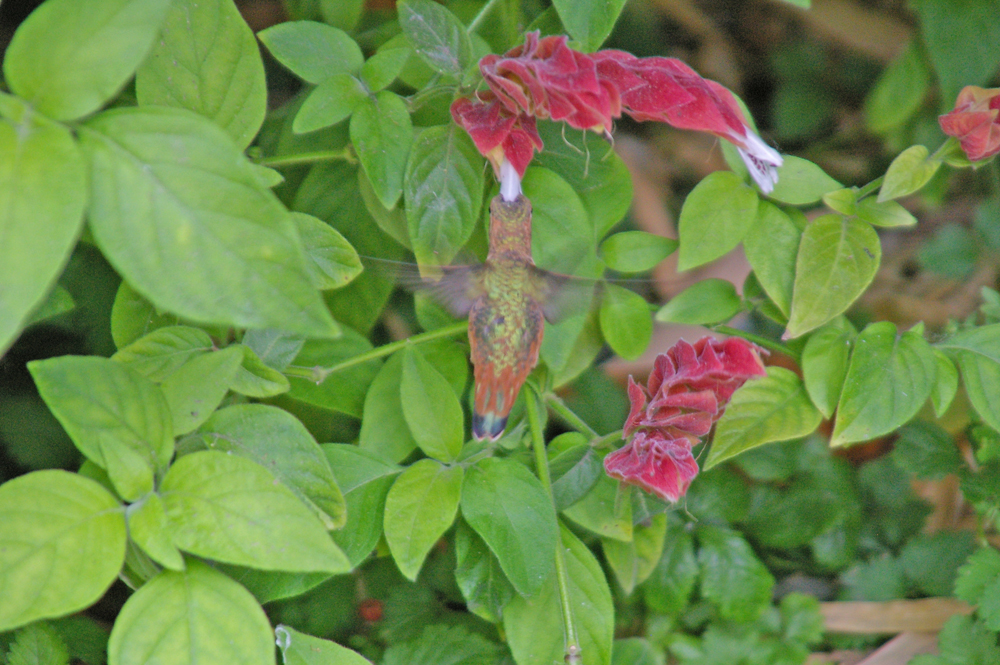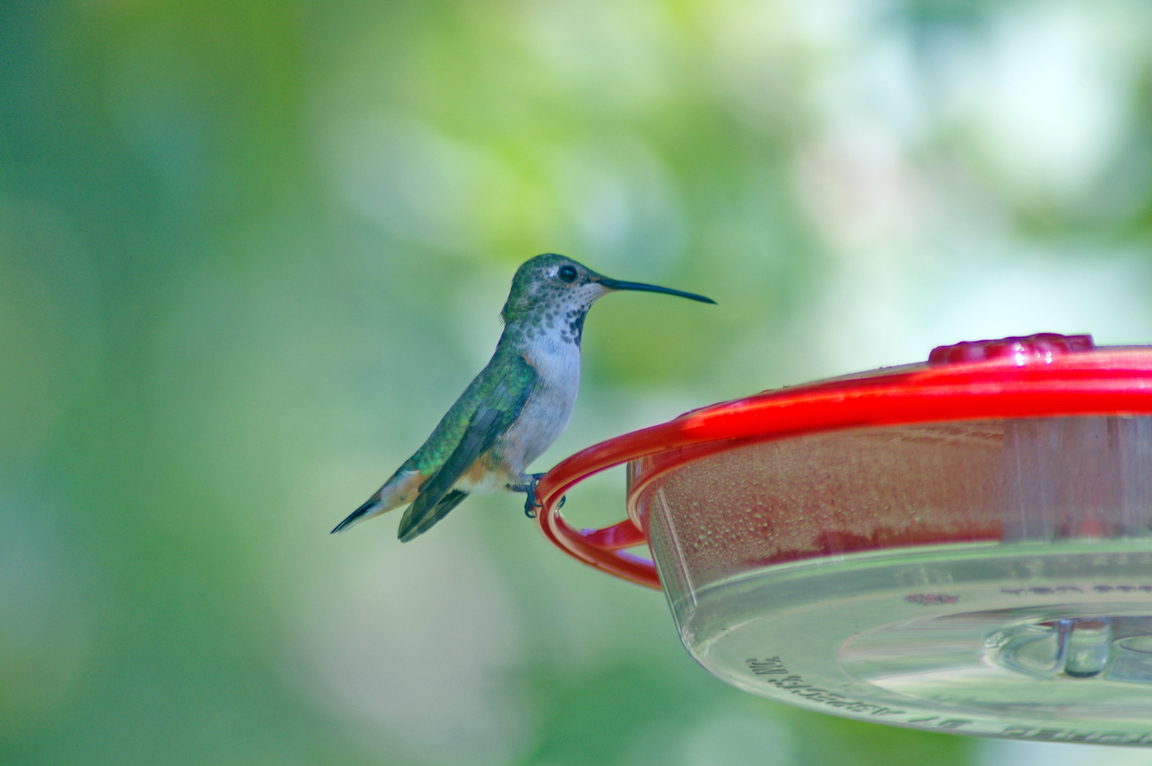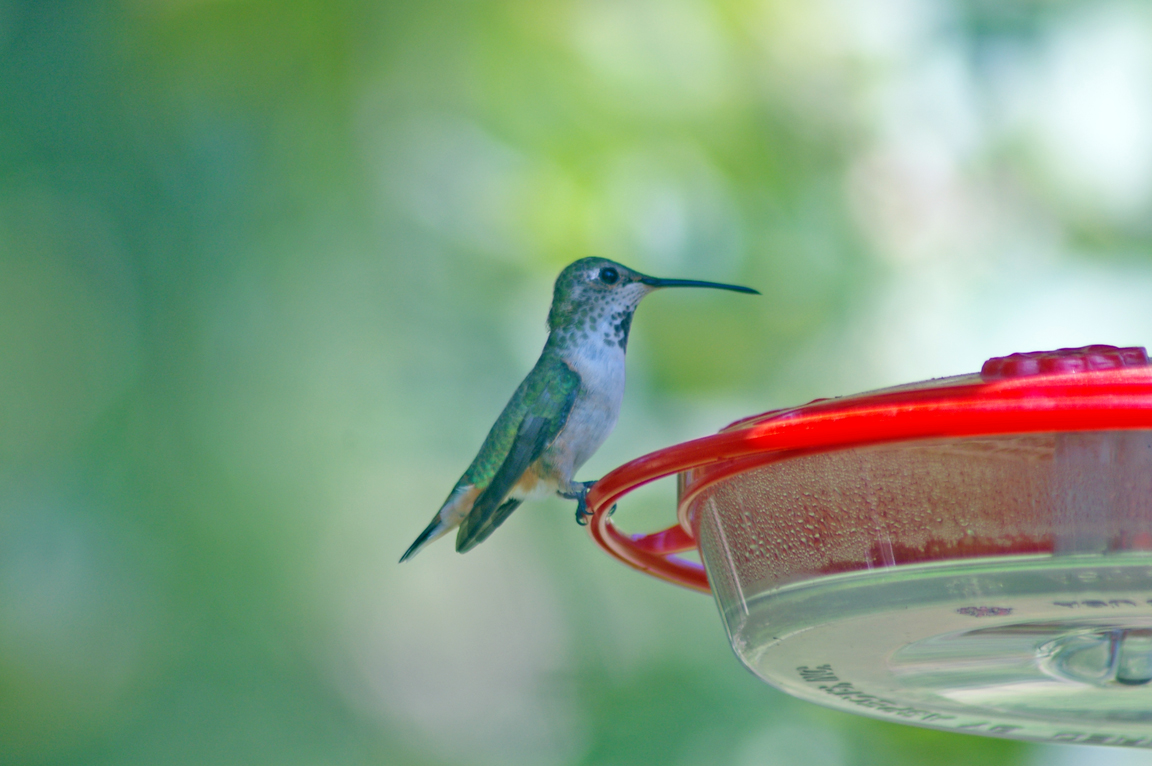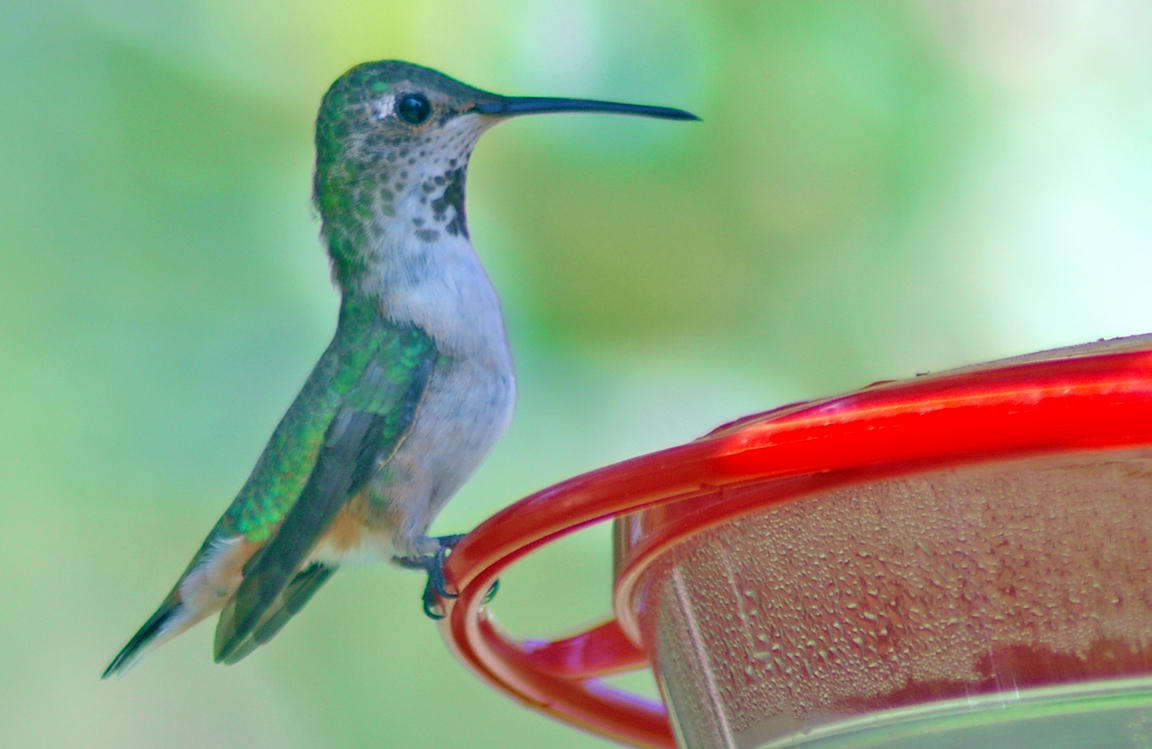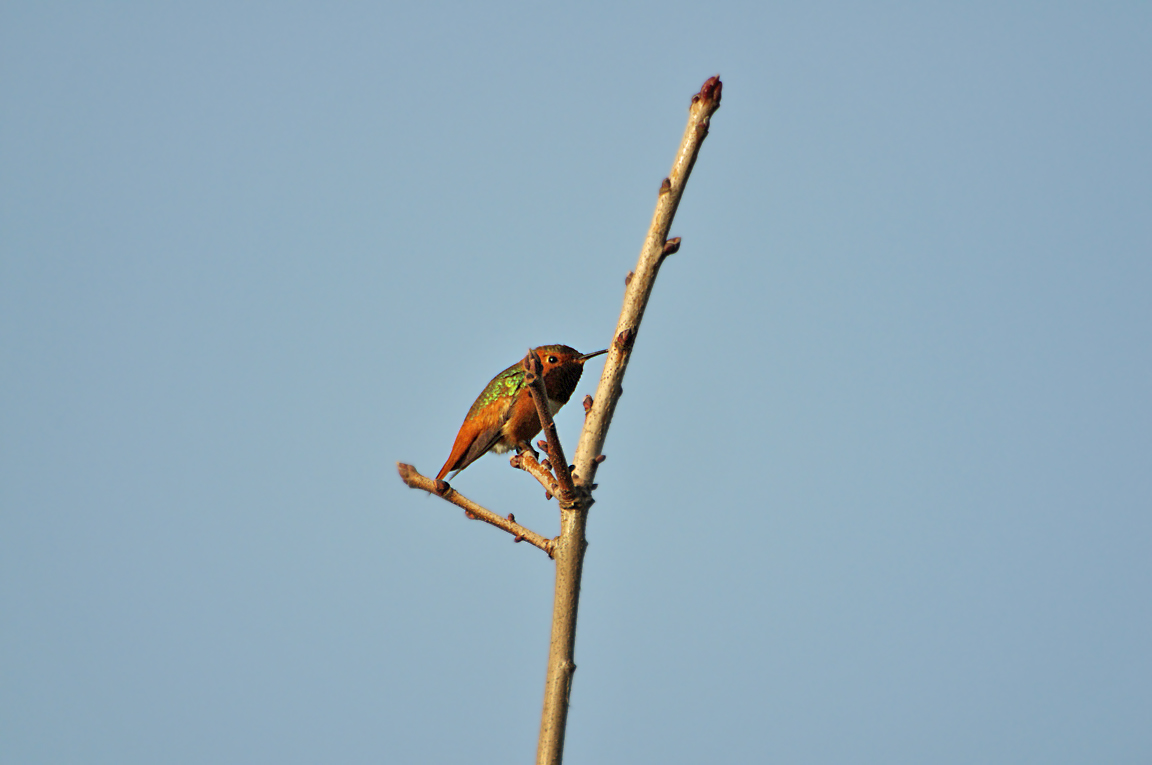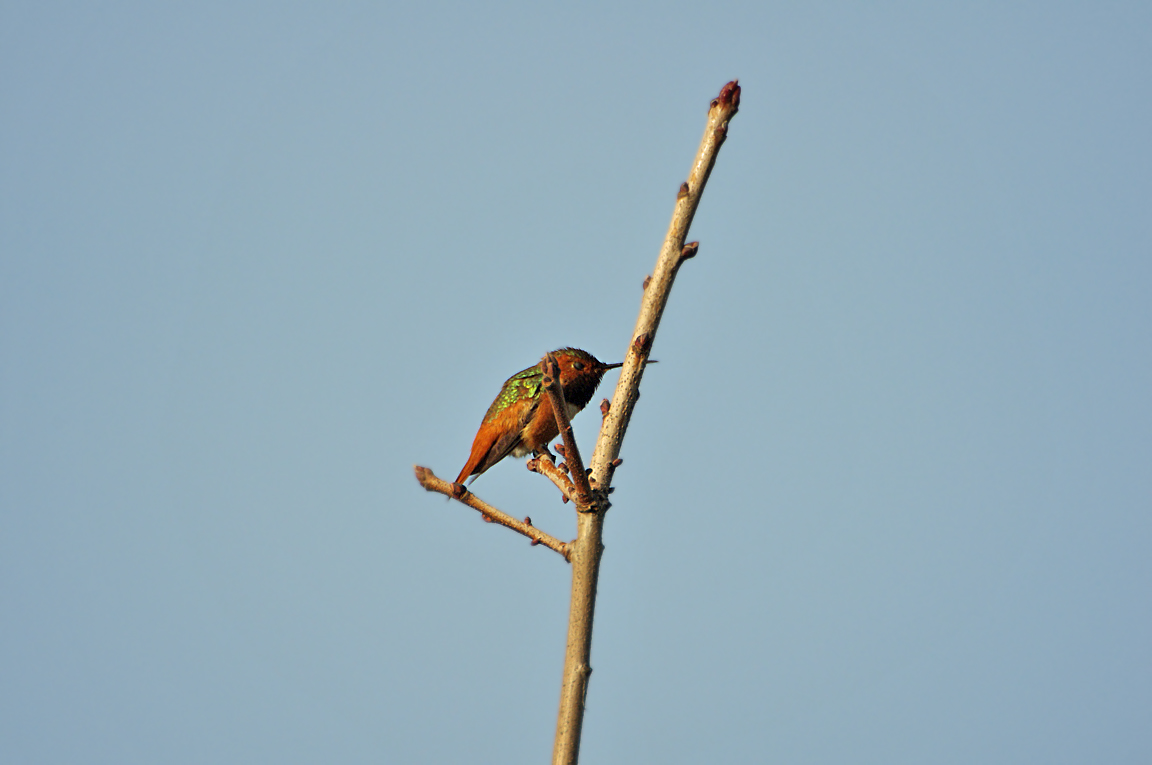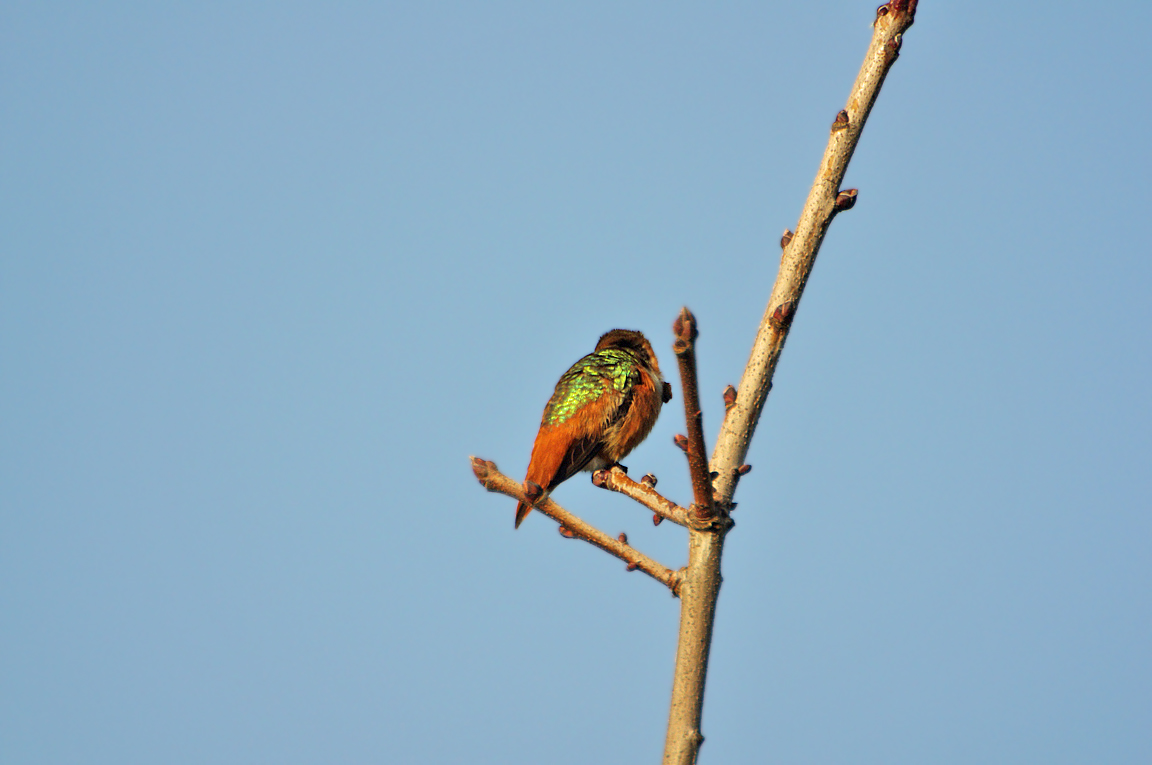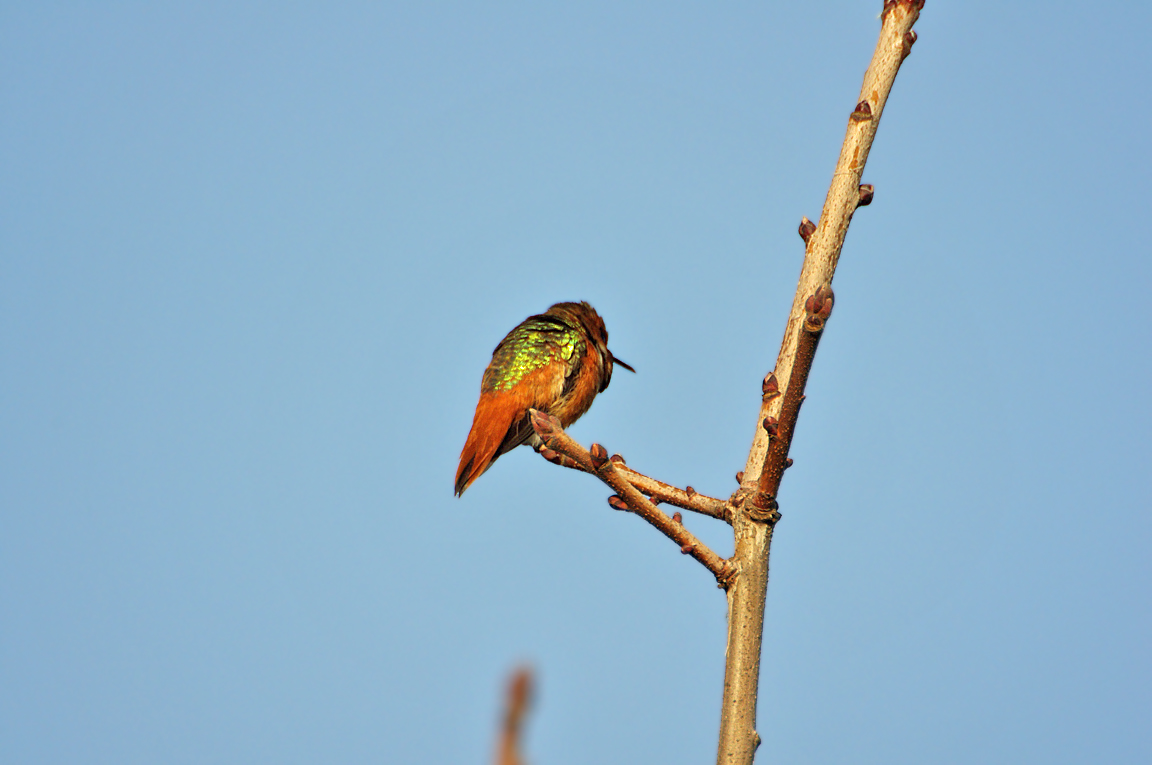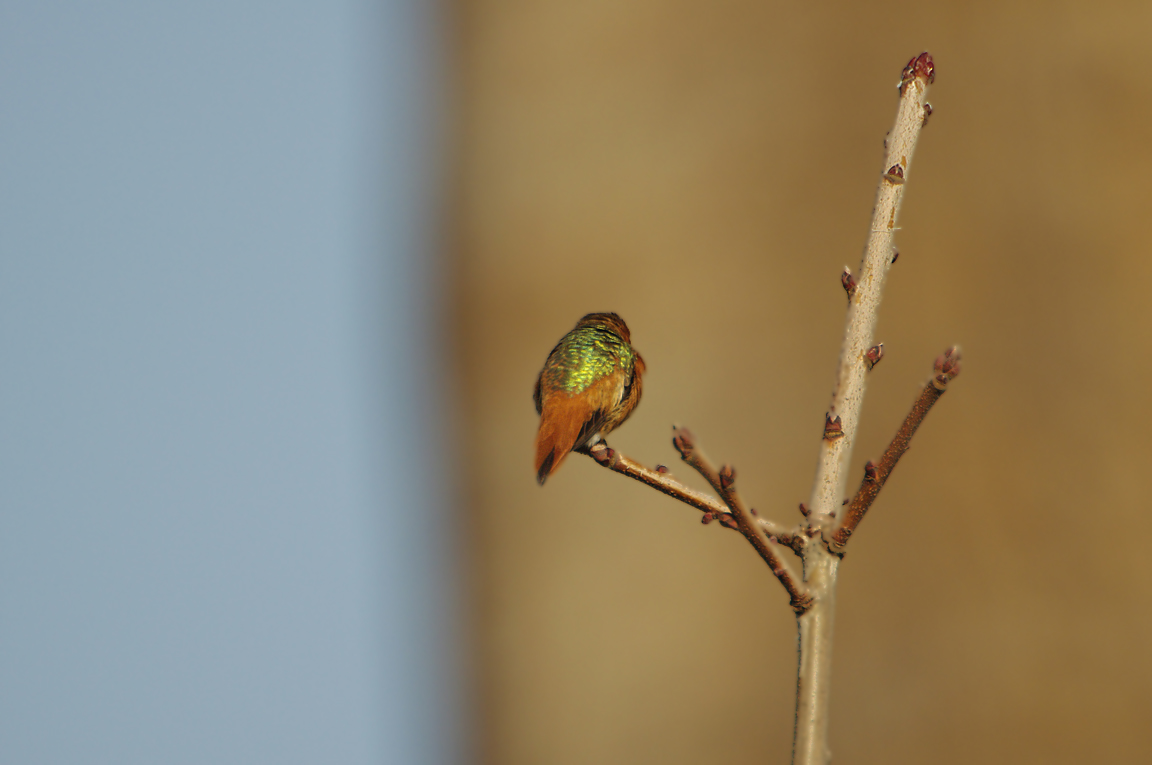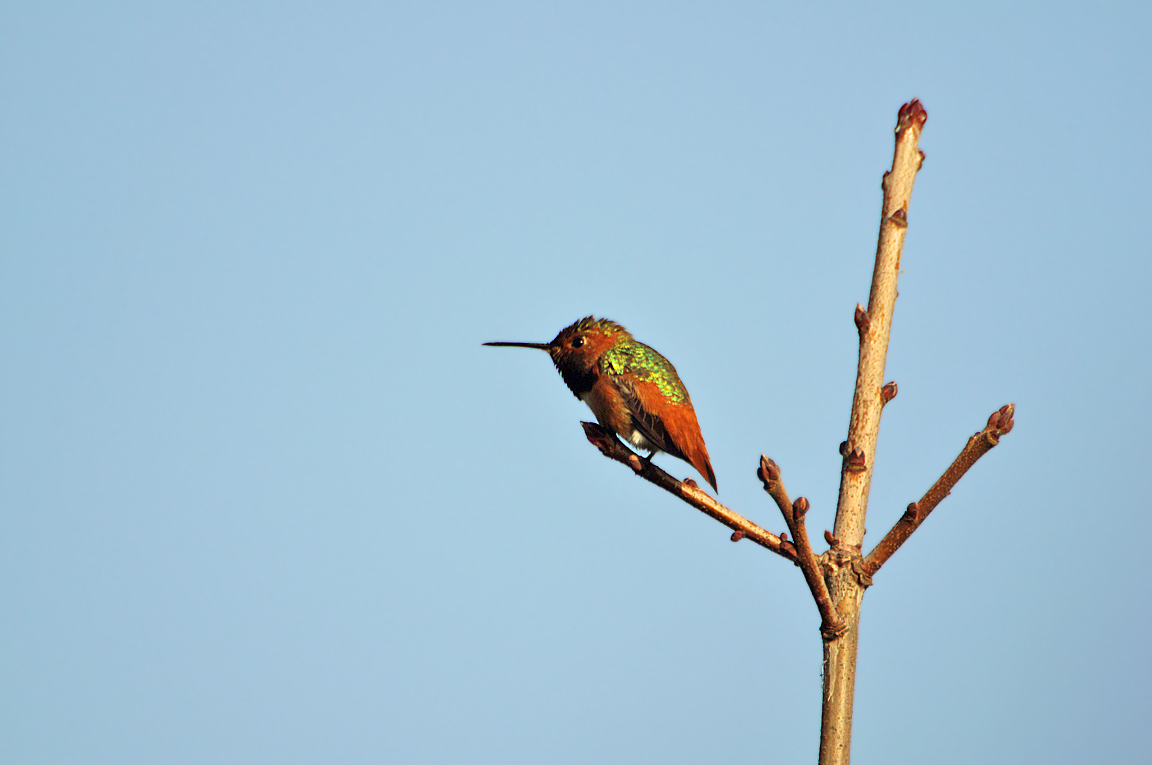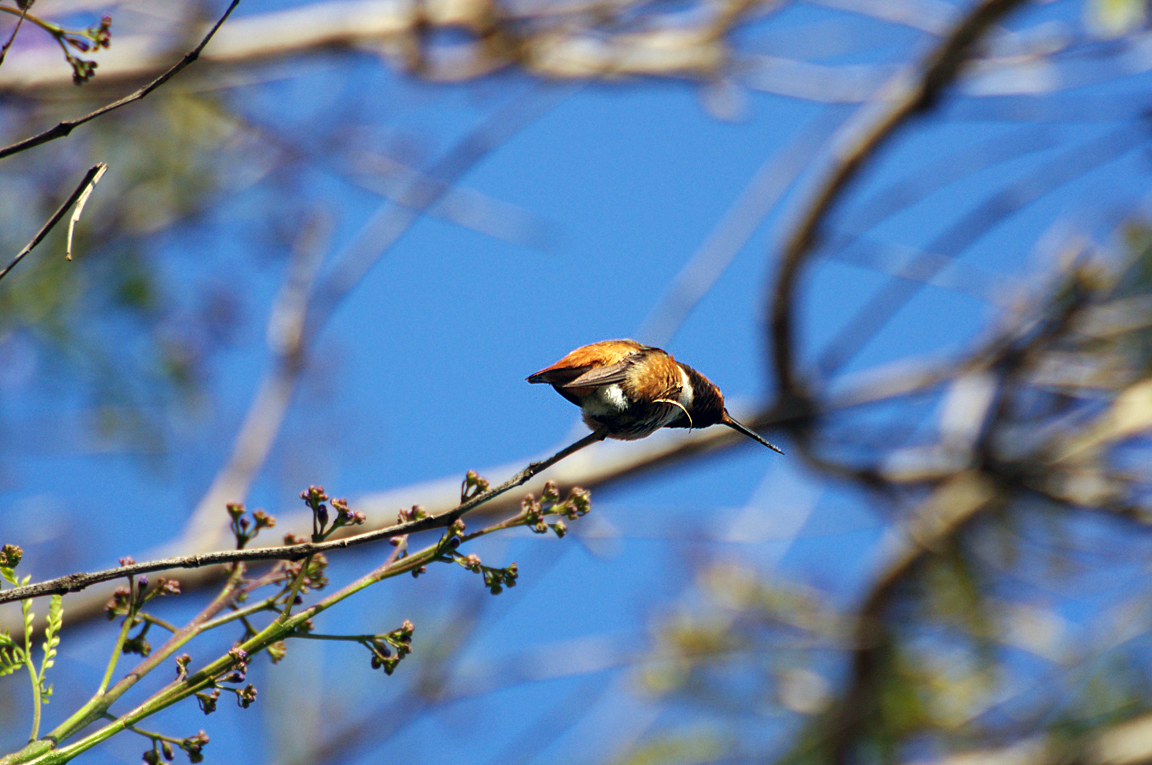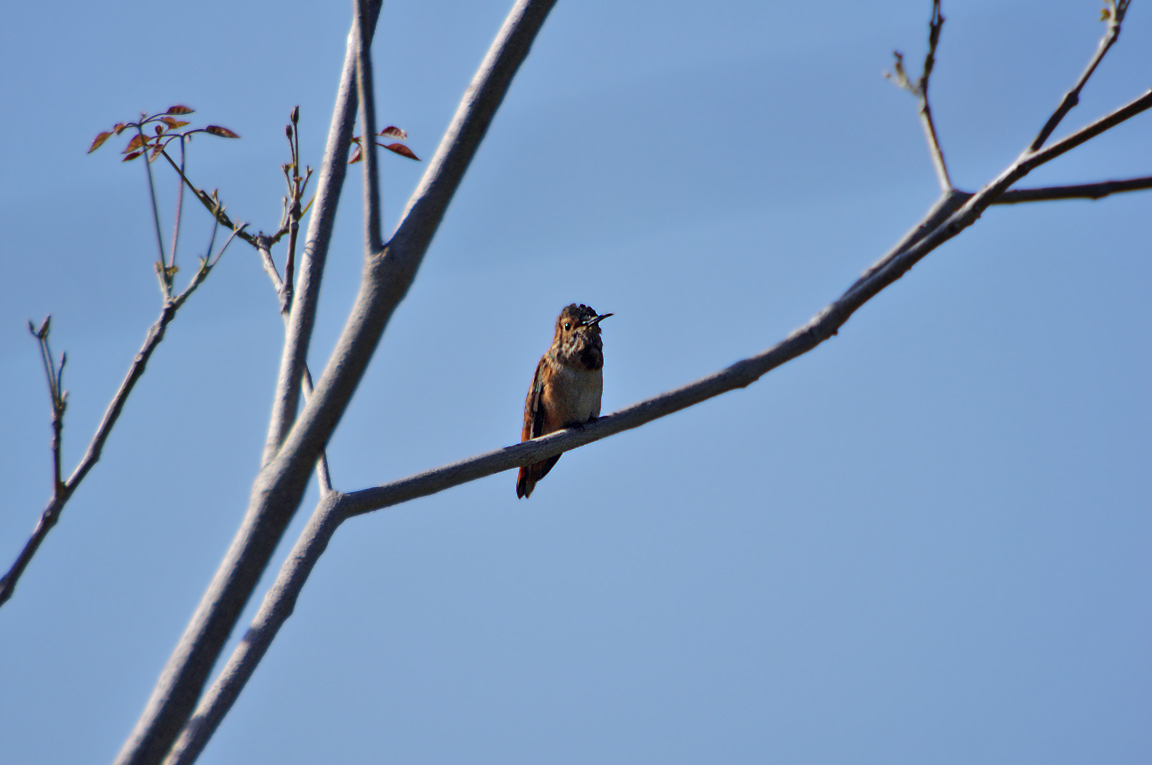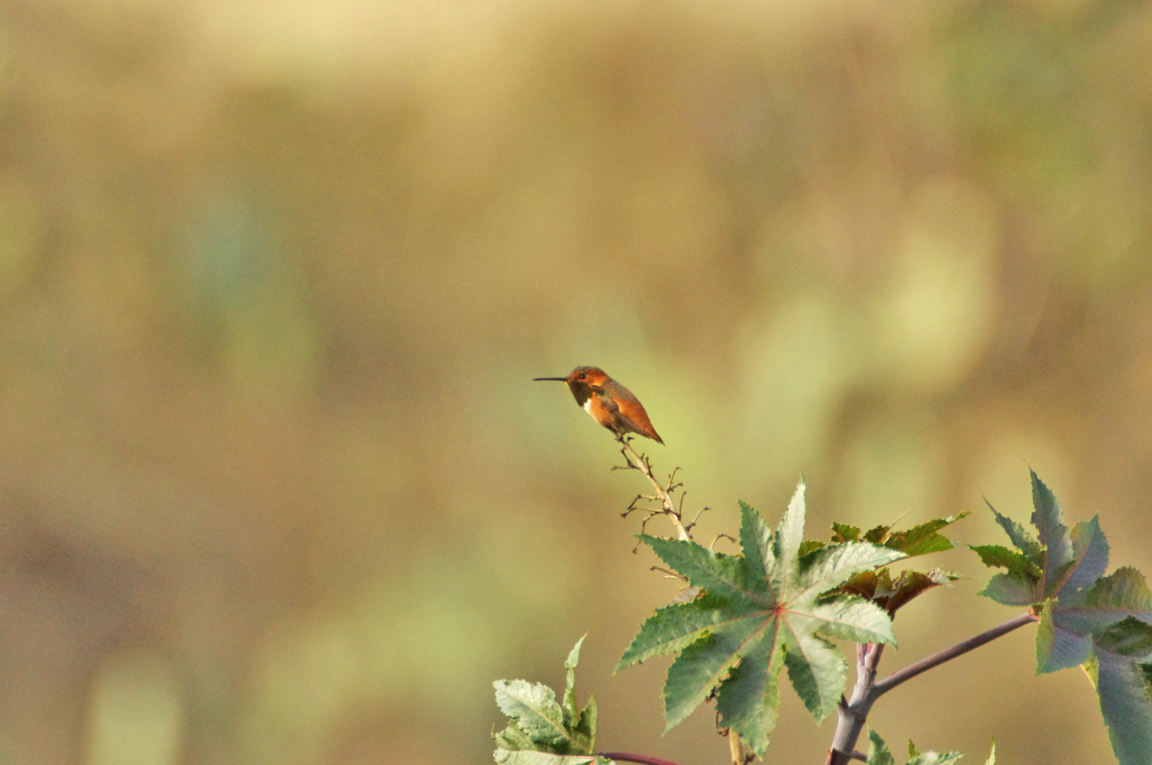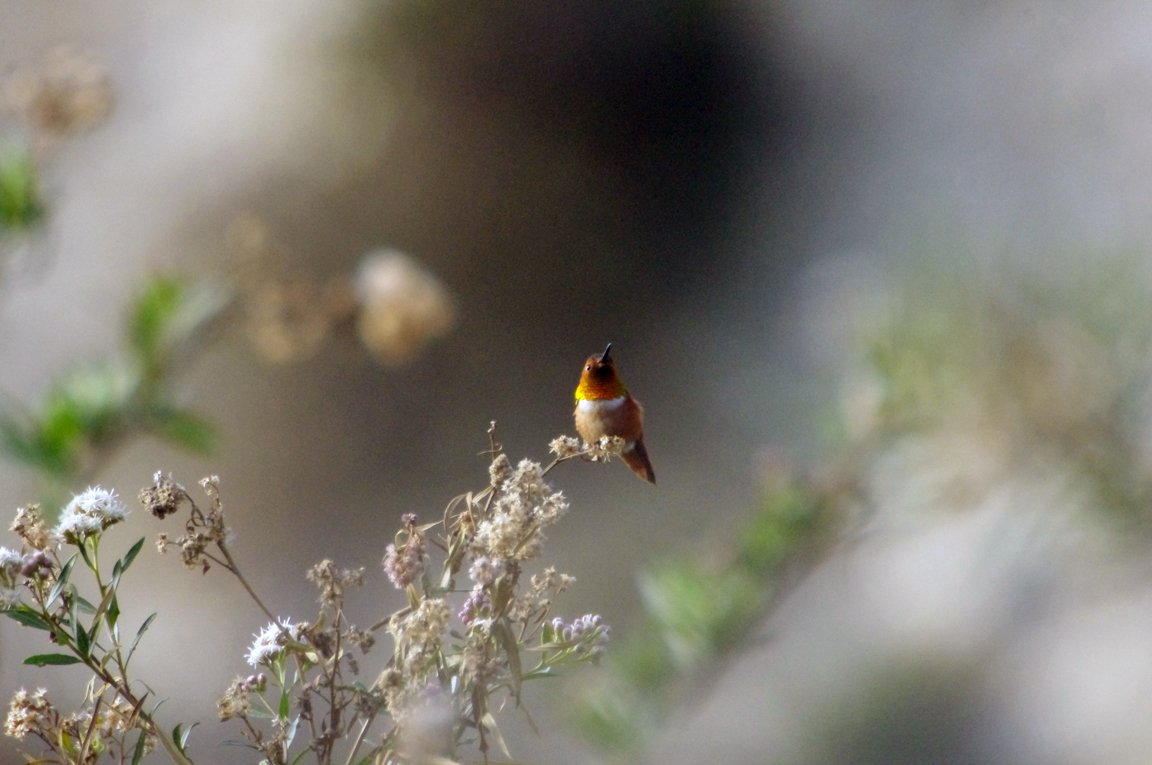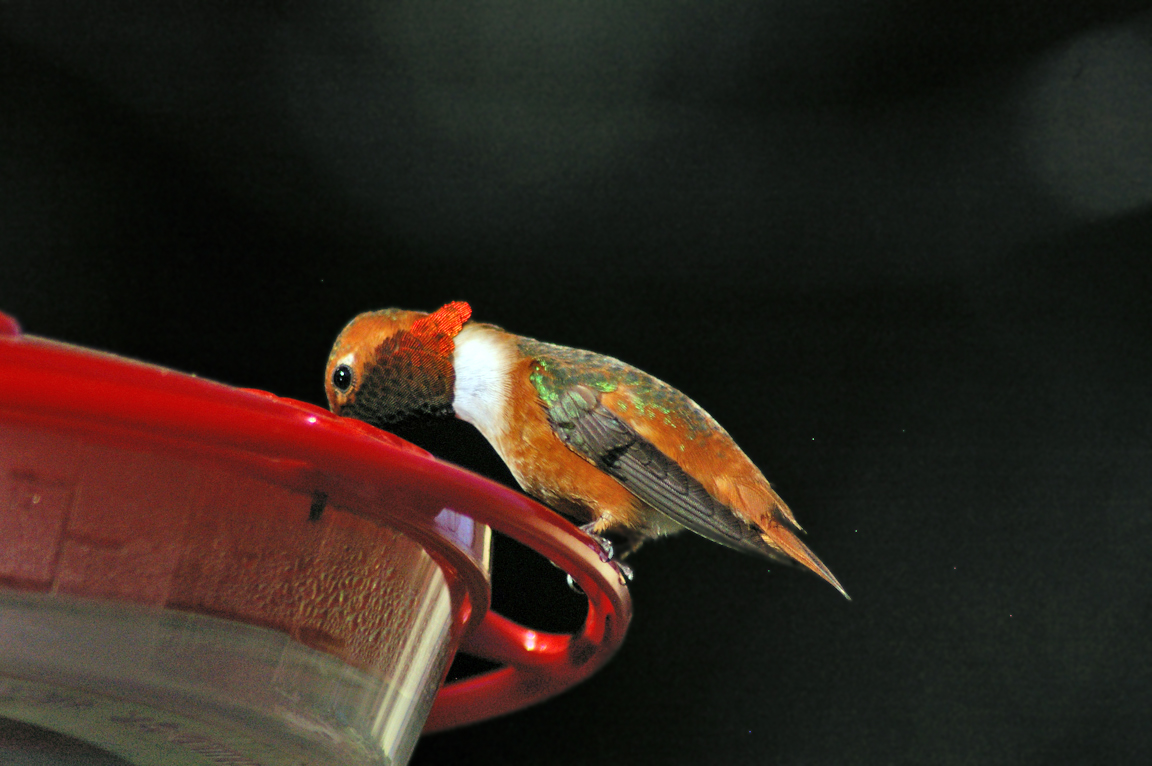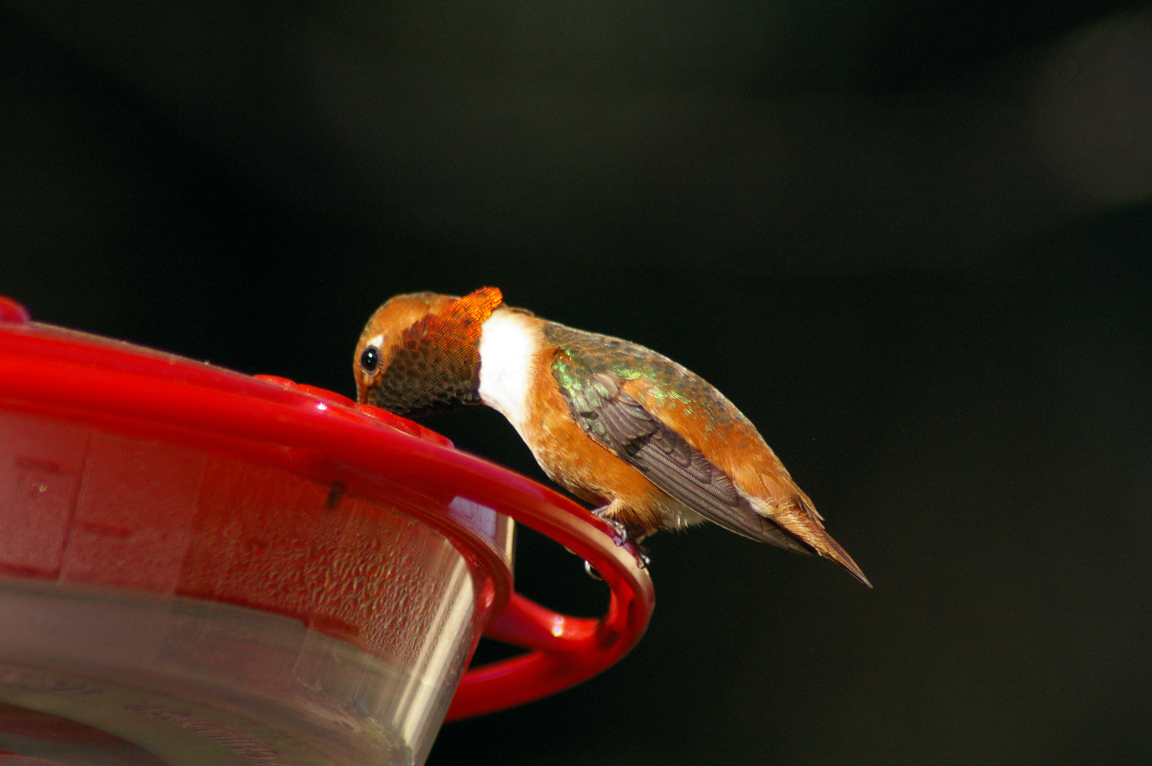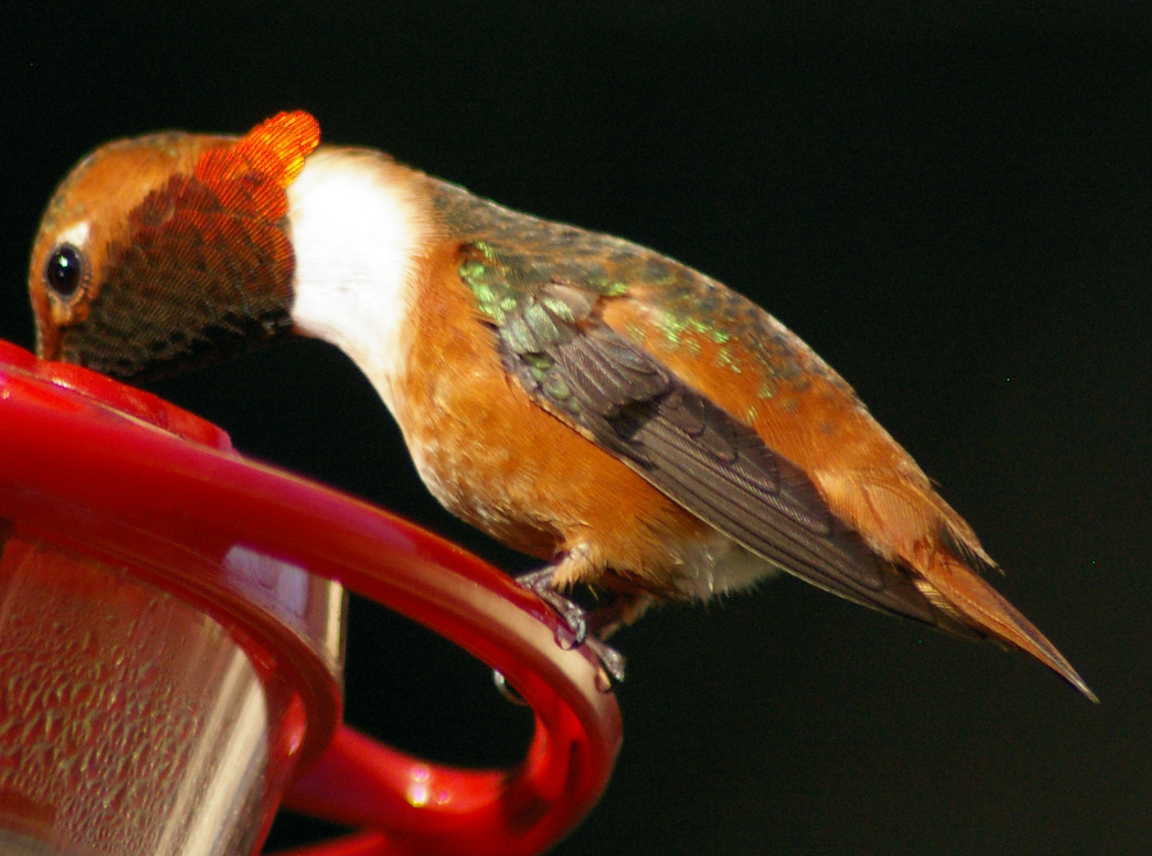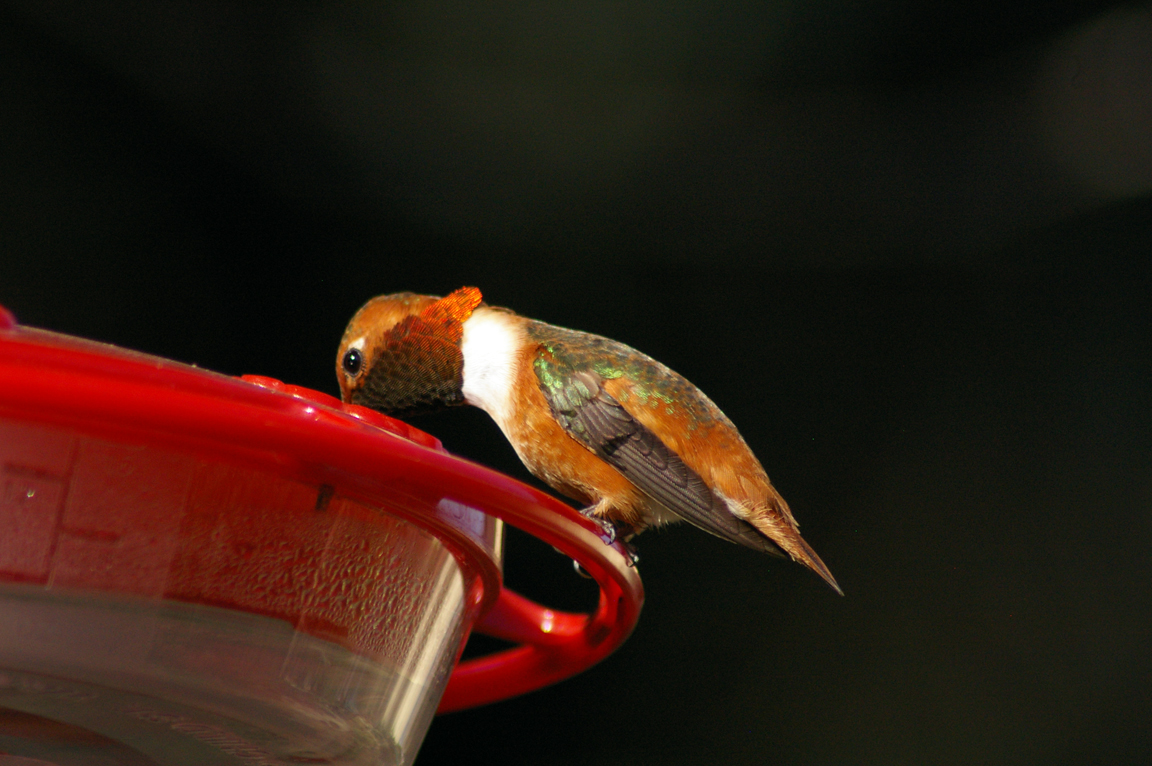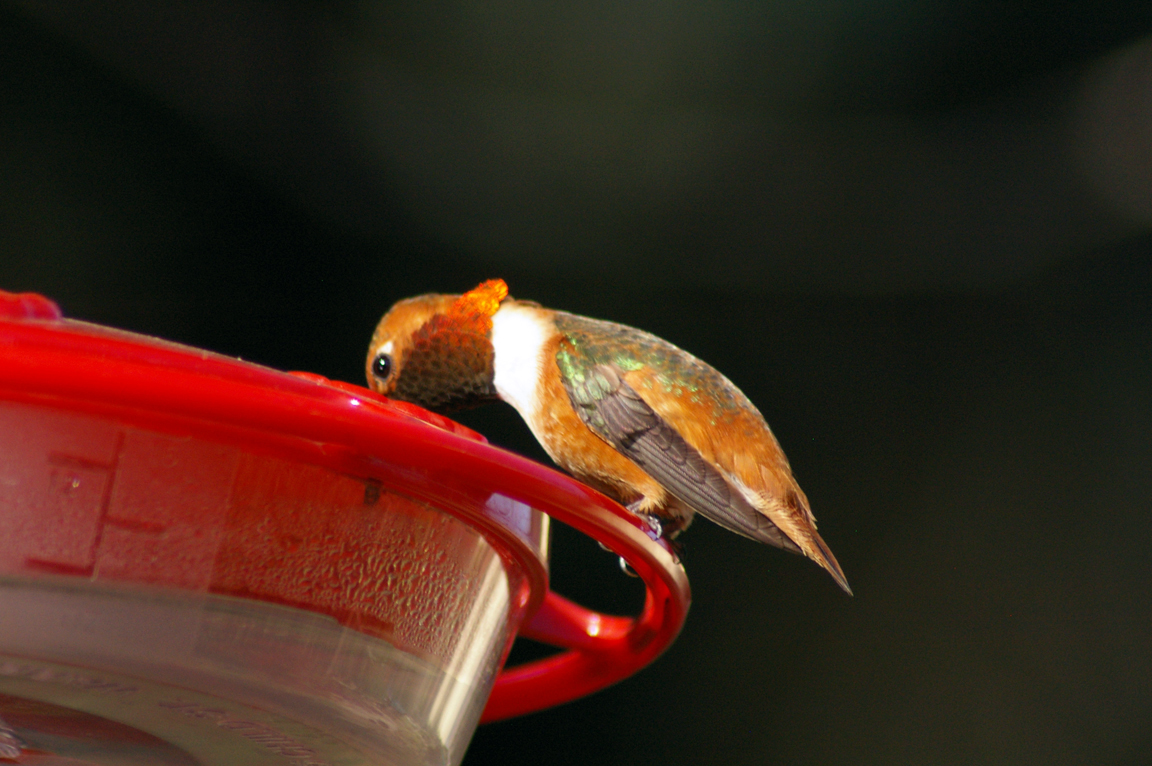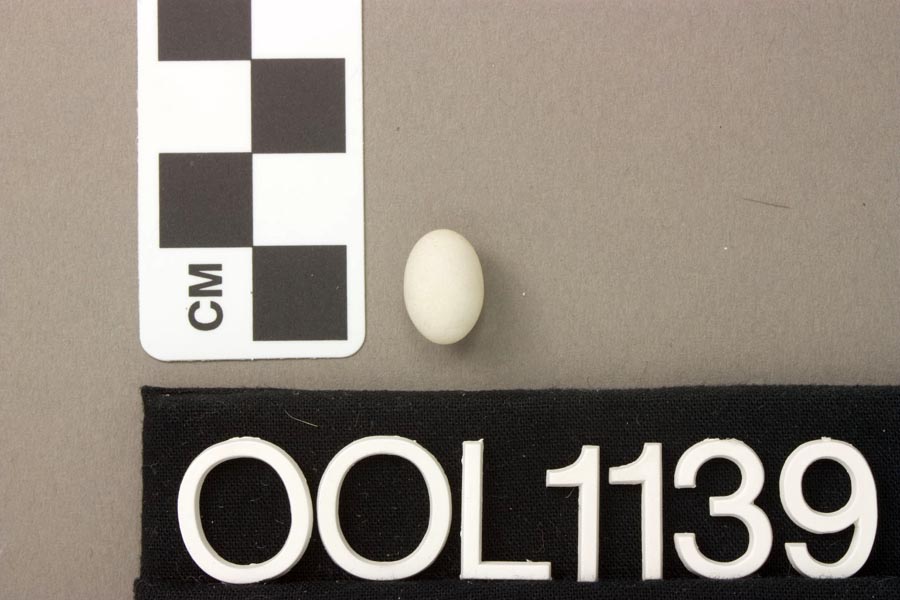|
|
|
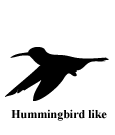 |
Allen's Hummingbird
|
| Selasphorus sasin | |
Extremely similar in appearance to the widespread Rufous Hummingbird, the Allen's Hummingbird breeds only along a narrow strip of coastal California and southern Oregon.
Interesting Information
-
Breeding male and female Allen's Hummingbirds have different habitat preferences. The male sets up a territory overseeing open areas of coastal scrub vegetation or riparian shrubs, where he often perches conspicuously on exposed leafless branches. The female selects nest sites in more densely vegetated areas and forests.
-
Two subspecies of Allen's Hummingbirds are recognized. They differ only slightly in appearance, but sedentarius of very southern California is nonmigratory, and the more northerly breeding, slightly smaller sasin spends the winter in Mexico.
-
The Allen's Hummingbird is remarkably early migrant compared with most North American birds. Northbound birds may depart on spring migration as early as December and arrive on the summer breeding grounds as early as January. Adult males may begin their southward fall migration in mid-May and arrive on winter grounds as early as August.
Description
Adult Description
-
Size: 9 cm (4 in)
-
Wingspan: 11 cm (4 in)
-
Weight: 2-4 g (0.07-0.14 ounces)
-
Tiny bird, small and compact hummingbird.v
-
Extensive rusty in most plumages.
-
Male with iridescent red throat and shiny green back.
-
Tail projects slightly beyond wingtips when perched.
-
Extensive rufous in tail.
-
Bill black, straight, and moderately long.
-
Outer tail feather extremely narrow.
Sex Differences
Male with red throat; female throat white with a few red feathers. Male extensively orange on body and head, female with green back and head. Male's tail orange with pointed black tips, female's tail orange, green, and black with rounded white tips.
Male
Gorget (throat) iridescent scarlet. Gorget with elongated feathers projecting slightly to the sides. Top of head and back dull metallic bronze or bronze-green. Sides of face, sides of chest, and flanks plain cinnamon-rufous. Tail feathers pointed, and colored orange with dark tips. Outermost tail feather very narrow. Wings dusky. Chest white. Belly and undertail coverts buffy. White spot behind black eye. Legs and feet dusky. Occasional individuals have orange in rump.
Female
Chin, throat, and chest dull white. Center of throat with variably sized patch of red feathers. Sides and flanks cinnamon-rufous. Back metallic bronze-green, head slightly duller. Wings dusky. Outermost three pairs of tail feathers orange at bases, black in the middle, and white on the tips. Middle pair of tail feathers bronze-green, dusky at tips, with orange edges to green base. Next pair out with rufous base, then bronze-green, and black tips. Undertail coverts pale cinnamon.
Immature
Immature similar to adult female, but has less spotting on throat and less rufous on flanks; male more rusty in the base of the tail.
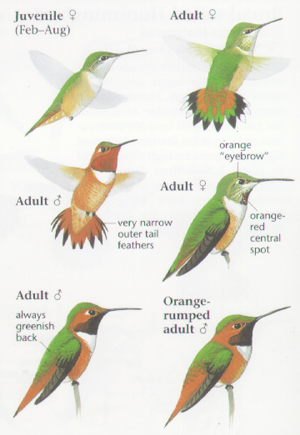
Photo taken from: The Sibley Field Guide by David Allen Sibley
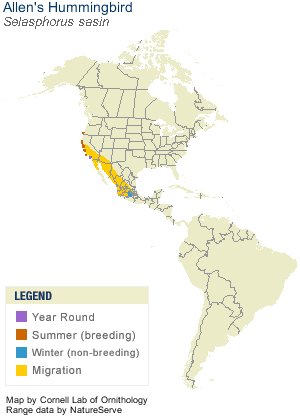
© 2003 Cornell Lab of Ornithology
|
Habitat |
|
Breeds in moist coastal areas, scrub, chaparral, and forests. Winters in forest edge and scrub clearings with flowers. |
|
Behavior |
|
Foraging Hovers at flowers and sap wells, catches insects in flight and plucks them from leaves. |
|
Food |
|
Flower nectar, small insects, and tree sap. Comes to hummingbird feeders. |
Taxonomy
| Kingdom: | Animalia |
| Phylum: | Chordata |
| Subphylum: | Vertebrata |
| Class: | Aves |
| Order: | Apodiformes |
| Family: | Trochilidae |
| Subfamily: | Trochilinae |
| Genus: | Selasphorus |
| Species: | Selasphorus sasin |
| Subspecies: | Selasphorus sasin sasin |
| Selasphorus sasin sedentarius |
Similar Species |
|
|
Bird Sound |
|
Does not sing. Calls buzzy; also sharp chips. Wings of adult male make a high, buzzy trill. |
|
Eggs look like this |
|
Photo taken from: ARCTOS Collaborative Collection Management Solution |
